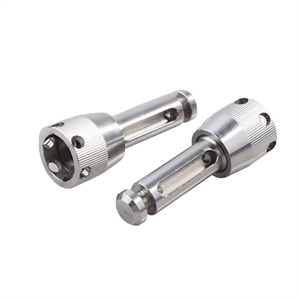CNC Turning is a process of cutting or trimming workpieces through relative motion between rotating tools and workpieces, typically used to manufacture parts with rotational symmetry. Tempering is a heat treatment process used to improve the properties of metal materials. In CNC Turning or other metal processing, the main purposes of tempering are as follows:
Adjusting mechanical properties:
After quenching, although CNC Turning has high hardness, its brittleness also increases accordingly. One of the main purposes of tempering is to adjust the mechanical properties of the workpiece. By heating it to an appropriate temperature and holding it for a certain period of time, CNC Turning can achieve the required hardness, strength, plasticity, and toughness.
According to the required performance, different temperatures of tempering can be used, such as low-temperature tempering (about 150-250 ℃) to maintain high hardness and wear resistance, suitable for cutting tools, molds, etc; Medium temperature tempering (about 350-500 ℃) can achieve high elasticity and yield point, suitable for springs, impact tools, etc.
Improve hardness and strength: enable parts that have been CNC turned to withstand greater loads and wear, enhancing their durability.
For example, for some shaft parts that require high wear resistance, quenching and tempering treatment can significantly improve their surface hardness.
Improve toughness and ductility: While increasing hardness, maintain a certain level of toughness to prevent brittle fracture of parts during use.
Parts that withstand impact loads, such as car axles, can have both hardness and toughness after appropriate heat treatment.
Eliminating residual stress: reducing internal stress caused by CNC turning process and avoiding deformation of parts during subsequent use.
For example, stress relief annealing can effectively maintain the dimensional stability of large parts after processing.
Stable size:
The structure of CNC Turning after quenching (such as martensite and some residual austenite) is unstable and prone to spontaneous transformation, causing changes in the size and shape of CNC Turning. Tempering can promote the stabilization of these structures, ensuring that the workpiece no longer undergoes significant deformation during use.
Improve other properties of materials:
Tempering can also increase the magnetic and electrical properties of metals, and improve their compatibility with other materials.
